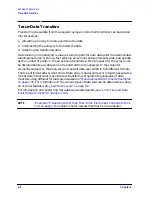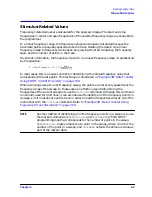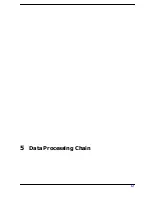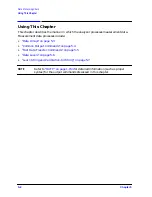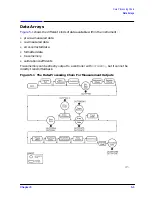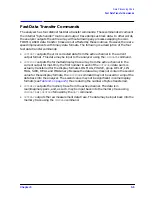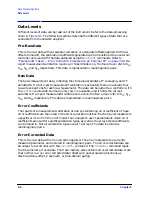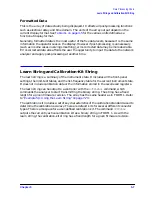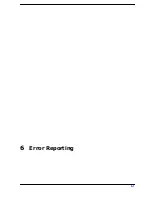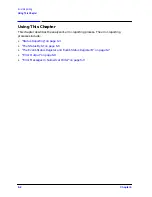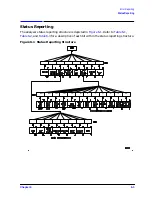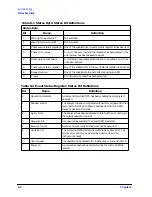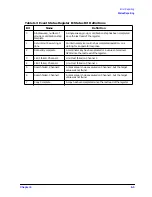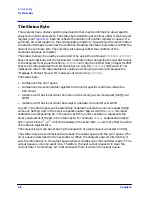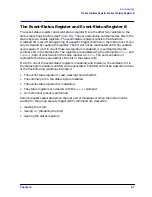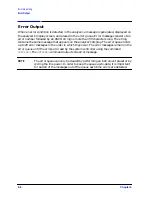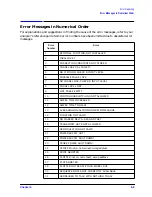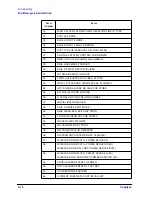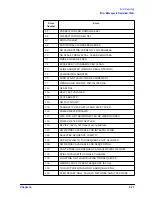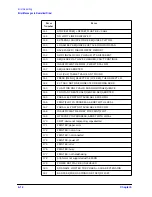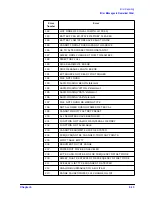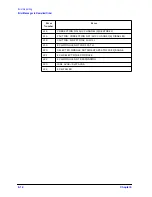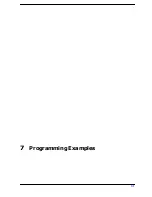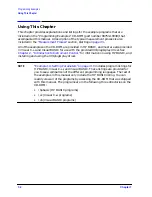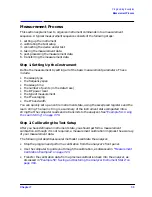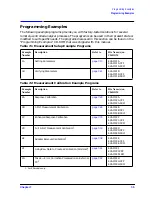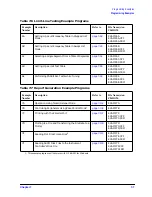
6-6
Chapter 6
Error Reporting
The Status Byte
The Status Byte
The analyzer has a status-reporting mechanism that reports information about specific
analyzer functions and events. The status byte (consisting of summary bits) is the top-level
register (see
). Each bit reflects the condition of another register or queue. If a
summary bit is set (equals 1), the corresponding register or queue should be read to obtain
the status information and clear the condition. Reading the status byte does not affect the
state of the summary bits. The summary bits always reflect the condition of the
summarized queue or register.
The status byte can be read by a serial poll or by using the command
OUTPSTAT
.
OUTPSTAT
does not automatically put the instrument in remote mode, thus giving the operator access
to the analyzer front-panel functions.
OUTPSTAT
will return an ASCII (text) integer (0–255)
that can be interpreted as the 8-bit status byte. Using the
OUTPSTAT
command will not
necessarily return the same status byte value as when using a serial poll because the
“Message in Output Queue” bit is always set when using
OUTPSTAT
.
The status byte:
• summarizes the error queue
• summarizes two event-status registers that monitor specific conditions inside the
instrument
• contains a bit that is set when the instrument is issuing a service request (SRQ) over
GPIB
• contains a bit that is set when the analyzer has data to transmit over GPIB
Any bit in the status byte can be selectively enabled to generate a service request (SRQ)
when set. Setting a bit in the service-request-enable register with the
SRE
nn
command
enables the corresponding bit in the status byte. The units variable nn represents the
binary equivalent of the bit in the status byte. For example,
SRE24;
enables status-byte
bits 3 and 4 (since 2
3
+ 2
4
= 24) and disables all the other bits.
SRE
will not affect the state
of the status-register bits.
The sequencing bit can be set during the execution of a test sequence to assert an SRQ.
The status byte also summarizes two queues: the output queue and the error queue. (The
error queue is described in the next section.) When the analyzer outputs information, it
puts the information in the output queue where it resides until the controller reads it. The
output queue is only one event long. Therefore, the next output request will clear the
current data. The summary bit is set whenever there is data in the output queue.
Summary of Contents for 8719ES
Page 15: ...1 1 1 Alphabetical Command Reference ...
Page 293: ...2 1 2 Introduction to Instrument Control ...
Page 310: ...3 1 3 GPIB Programming ...
Page 334: ...4 1 4 Reading Analyzer Data ...
Page 343: ...5 1 5 Data Processing Chain ...
Page 350: ...6 1 6 Error Reporting ...
Page 364: ...7 1 7 Programming Examples ...
Page 502: ...A 1 A Preset Conditions ...
Page 517: ...B 1 B Command Listings ...

